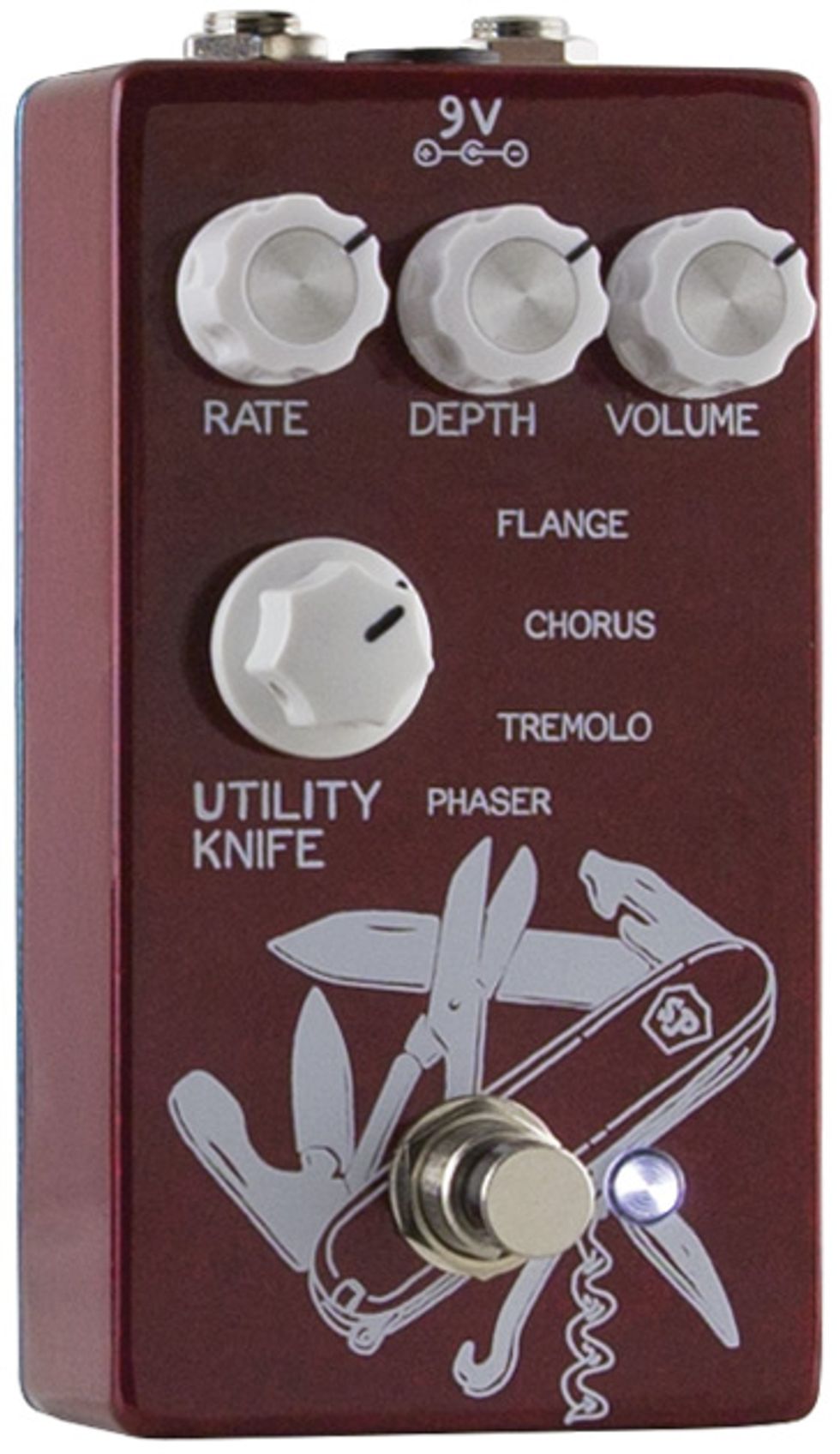RatingsPros:Multiple high-quality effects under one roof, simple controls. Cons: Simple designs means a lot of adjustments if you want many effects variations live. Street: $215 Southampton Pedals Utility Knife Modular southamptonpedals.com | Tones: Ease of Use: Build/Design: Value: |
Saving space on your pedalboard is a concern for anyone with an effects addiction. And as any sort of modulation junky can confirm, space becomes scarce fast once you delve deep into the many flavors of flange, tremolo, chorus, phase, and vibrato. Ontario-based Southampton Pedals may have a remedy though—at least as far as staple modulation tools go. It’s called, aptly, Utility Knife. And it’s a digital jack-of-all-trades that packs flange, chorus, tremolo, and phaser in a single, super-simple box no bigger than most single-function modulation stomps.
Tiny Toolbox
As the streamlined control set suggests, Southampton did a great job job of reducing these modulation effects to essentials. The chunkier, 4-way rotary knob selects the desired effect, while the three topmost knobs alter rate, depth, and volume. Input and output jacks are located at the top of the box, along with the 9V, barrel-style power adaptor input. There is no battery option.
I started my tests of the Utility Knife with a big amp that would showcase detail in the modulations. And with a Fender Stratocaster wired up to an Orange OR50 with a 4x12 cabinet, I set the Utility Knife to its 6-stage phaser and dialed up a quick Pink Floyd “Breathe” style slow swirl. Right away, I put the volume control to use. It’s noticeably robust, and can give you quite a boost if needed—a killer feature that many classic modulators don’t offer in spite of the perceived volume drop that flummoxes users of vintage modulators from Small Stones to Boss TR-2s. And while it can make the rich phase tones really jump in a mix, I kept the volume a hair below noon, which was right around unity for the single-coil pickups. The volume control has the bonus of adding color as well as more presence to the selected modulation mode—an effect that can be really dramatic for momentary applications of flange, phase, and tremolo. But while the big OR50 handled aggressively boosted settings just fine, a little Fender Champ 600 started to break up in the face of the extra kick to the front end. This isn’t necessarily a bad thing if you like a little organic drive. But fans of crystalline, detailed modulation tones will need to mind their volume/amp matchups.
Jumping over to the tremolo revealed a nice, clear sine-wave throb that’s ideal for vintage-style swamp modulation. Increasing depth will gradually drown out the dry mix, and full-clockwise settings will produce a choppy, almost sawtooth-like stutter at moderate rates that translates to twitching ray-gun effects at faster speeds. A Les Paul was perfect for driving the classic, jet-plane sweep of the flange effect. Not all flangers do this well, but with heavy depth settings, and the rate around 9 o’clock, Utilty Knife’s flanger delivered the smooth taper in the waveforms that generates a warmer, more complex “whoosh.” It’s great for ’80s Anglo-pop tones, too. By bringing the rate to 10 o’clock and depth around 2, I achieved the eerie swirl of the Cure’s “A Forest.”
It’s difficult to find a bad sound in the Utility Knife. The only real downside, if you can even call it that, is a necessary trade-off for the pedal’s simplicity—specifically a lack of presets that could find you scrambling to re-adjust effects in performance. Again, this isn’t a negative. If it’s presets you want, you’ve probably looked elsewhere. And if it’s simplicity you crave, then presets may be exactly the thing you look to avoid. But it’s food for thought if you imagine using the full breadth of Southhampton’s many excellent sounds in a live context.
The Verdict
While the $215 price can seem like a big chunk of change for such a simple pedal, the Utility Knife brings a lot to the table. It would be a challenge to get four separate modulators that tackle these tasks for less—even on the used market. And you could easily spend that much on two or three lesser-sounding stompboxes that house these mods, but eat up more space, consume more power, and add more noise. I enjoyed all the effects and could see this thing being a real workhorse onstage and in the studio—especially if you’re on a tight budget or have a tight pedalboard.








![Rig Rundown: Russian Circles’ Mike Sullivan [2025]](https://www.premierguitar.com/media-library/youtube.jpg?id=62303631&width=1245&height=700&quality=70&coordinates=0%2C0%2C0%2C0)

























